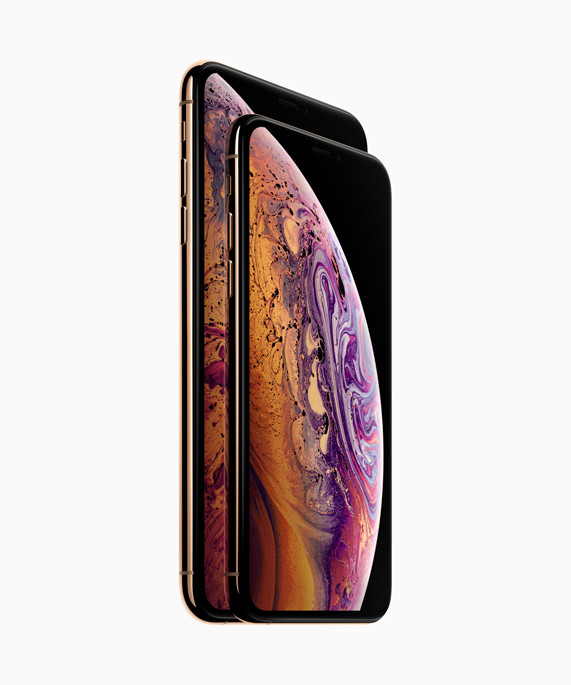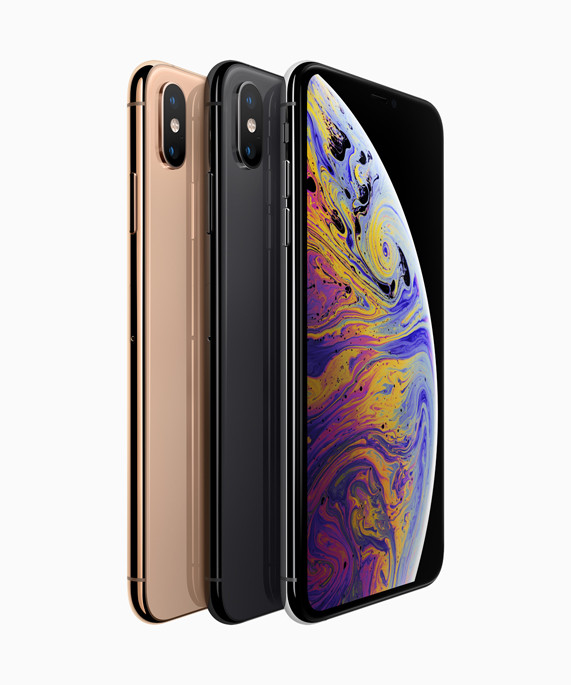Apple iPhone XS and XS Max unveiled - 5.8" and 6.5" OLED screens
September 20, 2018 • new-launch • News • Apple • iOS • iPhone • new-launch

Apple iPhone XS Max
The largest iPhone in history has been unveiled - iPhone XS Max with an expansive 6.5” AMOLED screen. Bezels have been removed, however the notch remains. The new tall screen has a 19.5:9 aspect ratio and has the same width as the 5.5” panel on the iPhone 8 Plus but comes with extra length.
This new "Super Retina" display achieves the same 458ppi pixel density of the iPhone X by bumping up its resolution to 1,242 x 2,688px.
The screen's touch sensing layer runs at smoother 120Hz (though UI still renders at 60fps). Dynamic range has been boosted by 60%. The display also supports HDR10 and Dolby Vision.
Apple has eliminated the touch ID as it did not want to move fingerprint reader to the back of the phone. This leaves the face ID’s 3D face scanner as the only biometric authentication method available. Fortunately, the facial recognition has sped up considerably compared to the first generation.
The dual 12MP camera has been completely revamped. The main wide-angle camera has an all-new improved sensor with larger 1.4µm pixels – up from 1.22µm. The aperture remains at f/1.8. The OIS enabled telephoto shooter contains a 12MP sensor, f/2.4 lens and 2x optical zoom.
The upgraded bokeh effect now allows you to adjust the depth of field after a photo is taken. The Smart HDR feature utilizes the power of the A12 Bionic chipset.
Armed with a zero shutter lag, the camera captures a 4 frame buffer, interframes as well as a long exposure and merged all into a single photo with a great dynamic range.
Selfie camera has been improved as well. The 7MP RGB sensor has improved in speed if not in resolution. Video recording now supports stereo audio and a wider dynamic range.
iPhone XS Max comes with a stainless steel chassis and a scratch-resistant glass – Apple purports it to be the most durable on a phone. The water resistance has been raised to IP68 too.
64GB is still the base storage, but the maximum capacity is now 512GB to match the competition from Android flagships. The other option is 256GB.
Apple iPhone XS
The Apple iPhone XS is a proper S-model – it is basically an enhanced iteration of the iPhone X with similar hardware and features. The powerful Apple A12 Bionic chipset will leave Android flagships in the dust in terms of performance (more memory than its predecessor). Like the iPhone XS Max, iPhone XS comes in 64GB, 256GB and 512GB versions too.

Its 7nm chipset features 6 cores (2 big + 4 small), as well as a 4-core GPU and a new 8-core neural engine, which sums up to 6.9 billion transistors. The big cores are 15% faster and 40% more power efficient than the A11 cores, while the power usage of the small cores has been halved. The new GPU offers 50% higher performance and higher memory bandwidth due to lossless compression. The neural engine despite having the 2 the number of cores of the previous generation, it is much more powerful - 5 trillion operations as compared to 600 billion.
The 5.8" screen is of the same resolution as last year's model - 1,125 x 2,436px. Pixel density matches the Max model, same for the touch frame rate (120Hz). Stereo speakers has been improved to deliver wider soundscape.
The colour options for the 2 XS models are pretty conservative. Silver and Space Gray are available. iPhone XS has an additional colour – Gold.
A unique model that has two physical SIM slots will be available in China.
